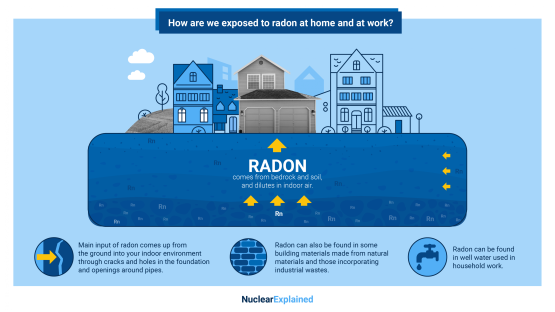We are continuously exposed to radioactivity in everyday life. Some of the most familiar sources of radiation include microwave ovens in our kitchens and the radios we listen to in our cars. Most of the radiation we are exposed to carries no risk to our health.
One source of natural radiation that presents a danger is radon — a radioactive gas with no colour, smell or taste. It is released from bedrock material and passes through the soil. It then tends to dilute in the air, so outdoors, radon poses no harm to human health.
On the other hand, indoor radon is dangerous and numerous studies have confirmed that even moderate concentrations – commonly found in residential buildings and at workplaces – pose health risks. High concentrations of indoor radon are particularly dangerous since prolonged exposure through inhalation significantly increases the risk of lung cancer.
Chemical elements which decay into radon, such as uranium, thorium and radium can be present in soil, water and construction materials. IAEA safety standards establish concentrations of radon in homes and at workplaces to protect the people’s health.




